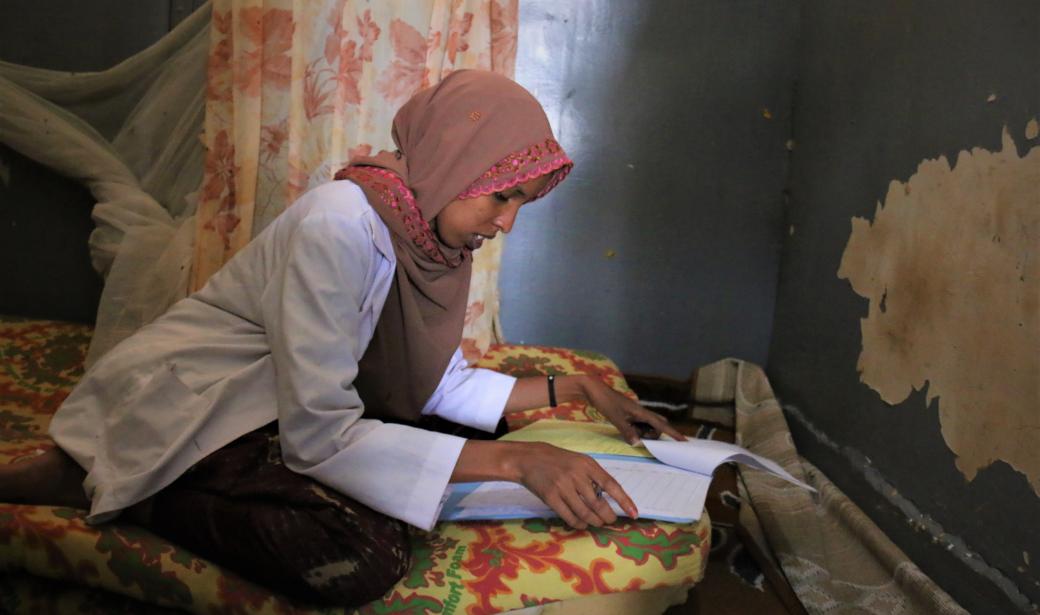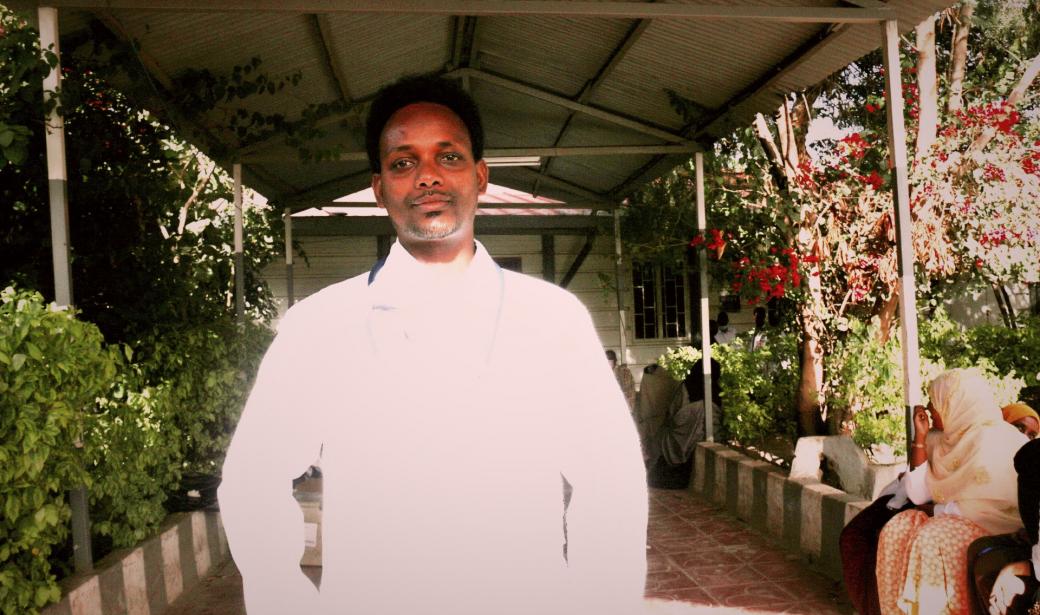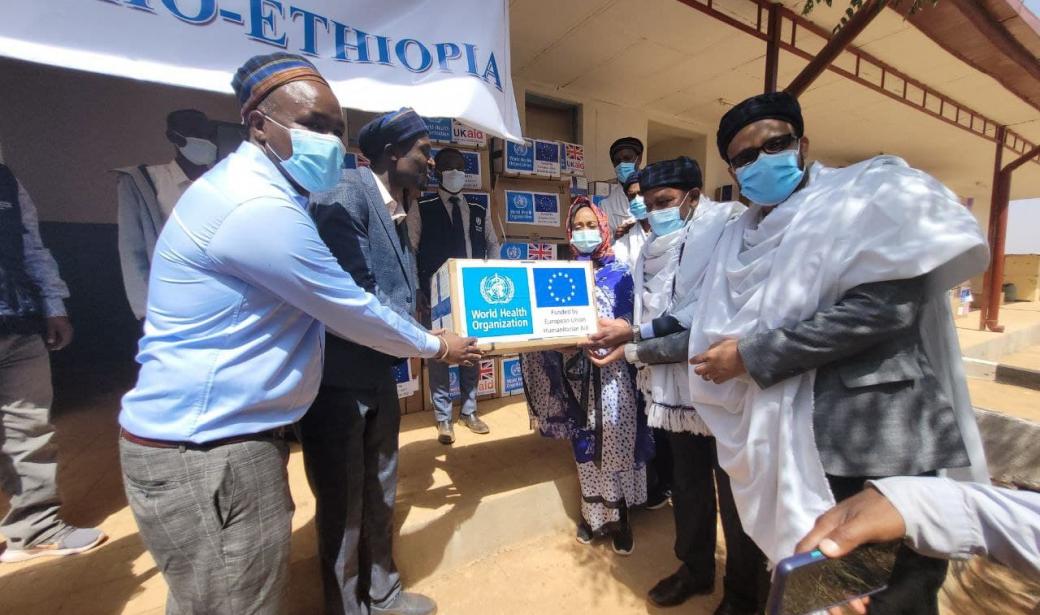In early June 2022, WHO Ethiopia’s Emergency Preparedness and Response team visited Somali Regional State to provide technical support and oversight to the health response to the severe health consequences of drought and food insecurity in the region. Over 3.5 million people, half of the population, are affected by the drought in the Somali region and malnutrition among children and breastfeeding mothers is rising.
WHO team visited stabilization centres where children with severe acute malnutrition are treated, met with the WHO-trained doctors and nurses at the facilities and caregivers of children with acute malnutrition, with communities and officials from Somali Regional Health Bureau.
The photos below tell the stories of the people WHO met with and listened to.
When her grandson began coughing, had diarrhea and weight loss, the community in her neighborhood raised money to help send the family to the treatment center at Jigjiga Town.
Faris has been in the hospital for three days already spending most of his time gazing at his mother and grandmother with sad eyes.
He has been under the close monitoring and care of doctors and nutritionists. Maryama’s eyes brim with tears as she holds her son for treatment. “I hope these treatments will restore my grandson to his old cheerful and vibrant self,” she says.
The doctors continue to monitor and examine Faris’s health status as well as other children under their care. For Faris, they have ordered antibiotics to manage his severe malnutrition with medical complication.
The medicine that they use for treatment of the children under their care is provided by WHO. In addition, WHO has been providing them training to provide care for children with severe malnutrition children.
The pastoralists don't normally settle in one place. This is even worsened now as the result of the drought, and they have to travel to remote locations in search water and grazing land for their livestock. Mr Mohammud adds that the regional health bureau appreciates WHO’s support to the health bureau’s health provision efforts, and for prepositioning cholera treatment kits as cross-border movement is very high in the region, bringing with it the risk of disease transmission.
WHO works with other humanitarian organizations to facilitate coordination and collaboration with health partners to ensure health service provision to the affected communities. With the support of EU Civil Protection and Humanitarian Aid, WHO is able to provide critical health services, and supported the response to drought.
More than 8 million pastoralist and agro-pastoralist communities in Oromia, SNNP, Somali and South-West regions are currently affected by the drought, and more than 1.5 million livestock have died.
Communications Officer
WHO Ethiopia
Email: gebremichaela [at] who.int (gebremichaela[at]who[dot]int)
Senior Communications Officer
WHO Ethiopia
Email: tesfayel [at] who.int (tesfayel[at]who[dot]int)
Tel: +251 911 144 194 (Direct, Whatsapp)





